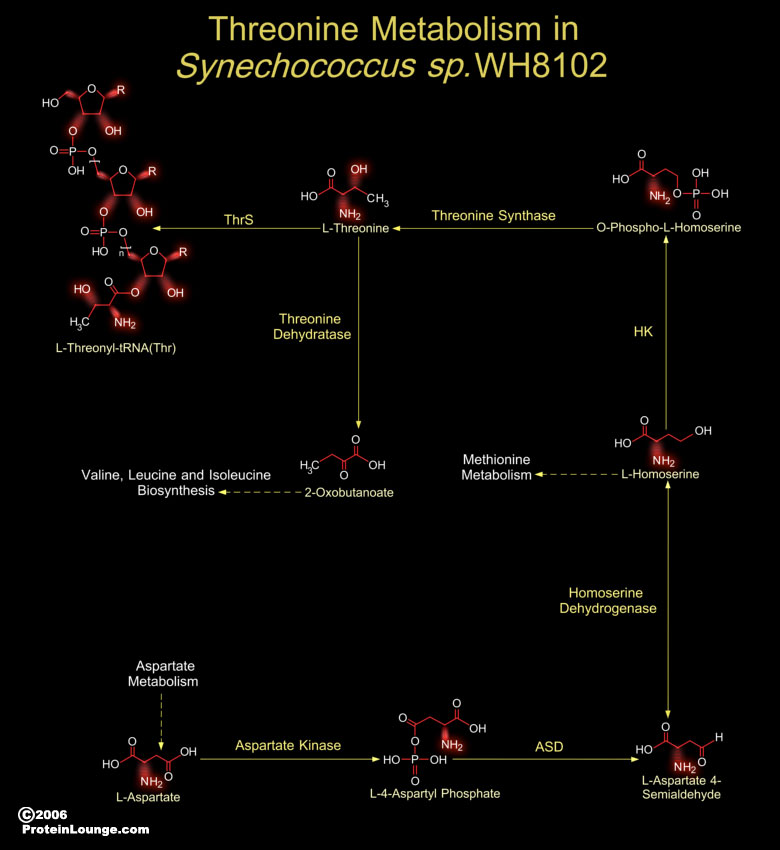
Marine unicellular Cyanobacteria of the Synechococcus group occupy an important position at the base of the marine food chain. They are abundant in the world's oceans and as a result are one of the most numerous genomes on earth. They have the ability to acquire major nutrients and trace metals from the sub-micromolar concentrations found in the oligotrophic open seas and theiSynechococcus light-harvesting apparatus is uniquely adapted to the spectral quality of light in the ocean. Synechococcus utilizes Chlorophyll-A. Marine unicellular Cyanobacteria are responsible for an estimated 20-40 percent of Chlorophyll biomass and Carbon fixation in the oceans (Ref.1). Open ocean isolates of Synechococcus possess a unique type of swimming motility not seen in any other[..]

Cyanobacteria are photoatutrophic micro-organisms occuring in all photic environments. It is widely accepted that Cyanobacterial type endosymbiont are the ancestor of Chloroplasts in higher plants. Synechocystiae are unicellular, photoautotrophic, facultative glucose-heterotrophic cyanobacteria. They are oxygenic photosynthetic with two photosystems at their disposal, similar to those in Algae and Plants, and they fix atmospheric Nitrogen. Synechocystis sp. PCC6803 grows in the absence of Photosynthesis if a suitable fixed-carbon source such as Glucose is provided. Synechocystis sp. strain PCC6803 is a unicellular Cyanobacterium with a light-dependent cell cycle and contains six to eight chromosome copies (Ref.1). This strain is easily transformable, and capable of[..]
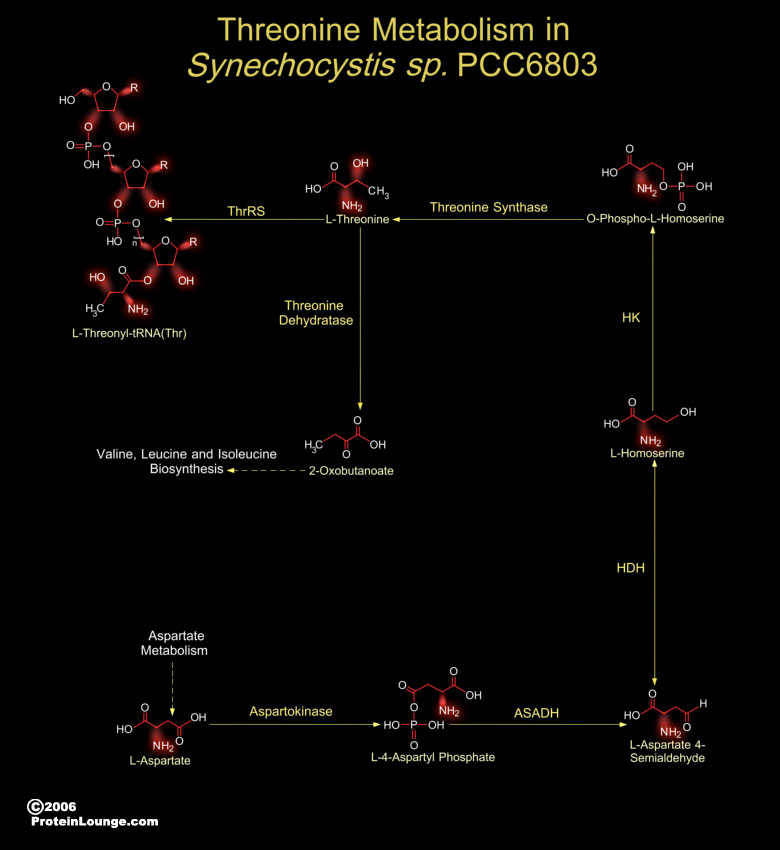
Cyanobacteria are photoatutrophic micro-organisms occuring in all photic environments. It is widely accepted that Cyanobacterial type endosymbiont are the ancestor of Chloroplasts in higher plants. Synechocystiae are unicellular, photoautotrophic, facultative glucose-heterotrophic cyanobacteria. They are oxygenic photosynthetic with two photosystems at their disposal, similar to those in Algae and Plants, and they fix atmospheric Nitrogen. Synechocystis sp. PCC6803 grows in the absence of Photosynthesis if a suitable fixed-carbon source such as Glucose is provided. Synechocystis sp. strain PCC6803 is a unicellular Cyanobacterium with a light-dependent cell cycle and contains six to eight chromosome copies (Ref.1). This strain is easily transformable, and capable of[..]
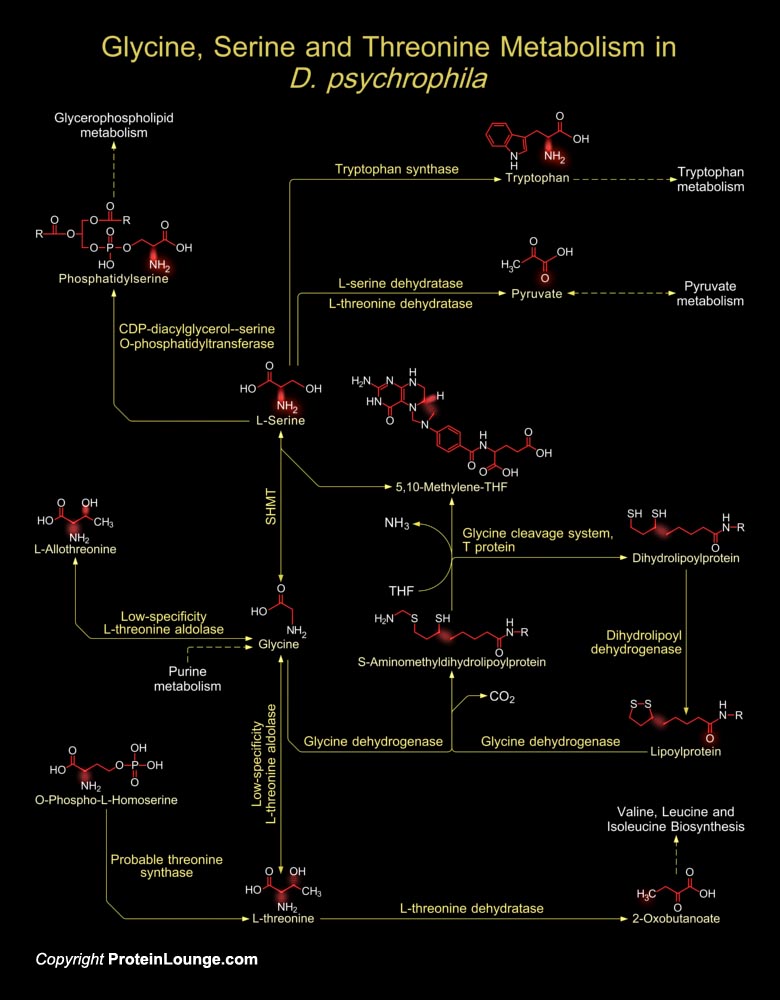
D. psychrophila (Desulfotalea psychrophila) is a sulfate-reducing Gram-negative Delta-proteobacterium that is able to grow at temperatures below 0°C, i.e., psychrophilic and reside mostly in cold arctic marine sediments. The main mode of energy generation in D. psychrophila is sulfate reduction through fermentation. Investigating the biochemical mechanisms of such sulfate-reducing psychrophilic bacteria is vital for understanding the functioning of global biogeochemical cycles. The metabolism of vital amino acids like Glycine, Serine and Threonine acts as one of the many sources that provide carbon or energy to D. psychrophila in form of intermediates like Pyruvate, etc (Ref.1 & 2). During Serine metabolism L-Serine is interconverted into Pyruvate by L-Serine[..]
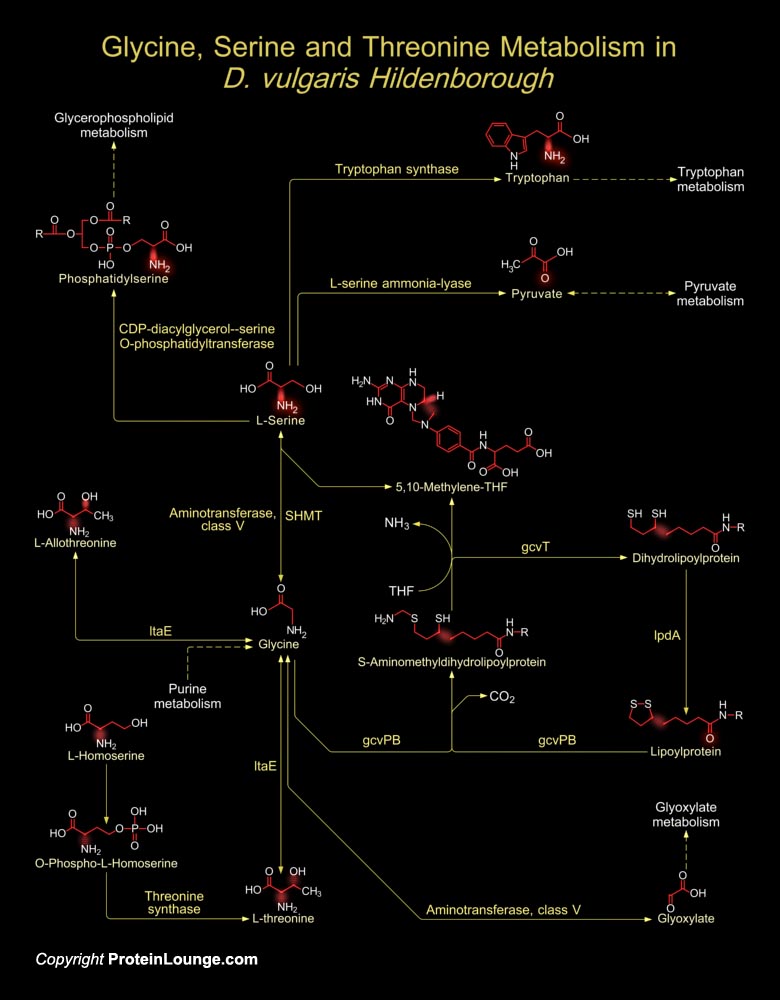
D. vulgaris (Desulfovibrio vulgaris) is a Gram-negative, anaerobic, non-spore forming, curved rod-shaped bacteria, isolated from soil, animal intestines and feces, and fresh and salt water. The distinguishing characteristics of Desulfovibrio species are that they contain Desulfoviridin, a multimeric-dissimilatory sulfite reductase. D. vulgaris Hildenborough oxidize their energy source to that of Acetate and excrete this as their end product. Desulfovibrio also uses Hydrogen, Lactate, and Pyruvate as electron donors and this genus can grow easily on a Sulfate-Lactate medium in the absence of Oxygen. The biochemical processes like metabolism of Glycine, Seine and Threonine provides Acetate, Lactate and Pyruvate by converting amino acids to Pyruvate. During metabolism[..]
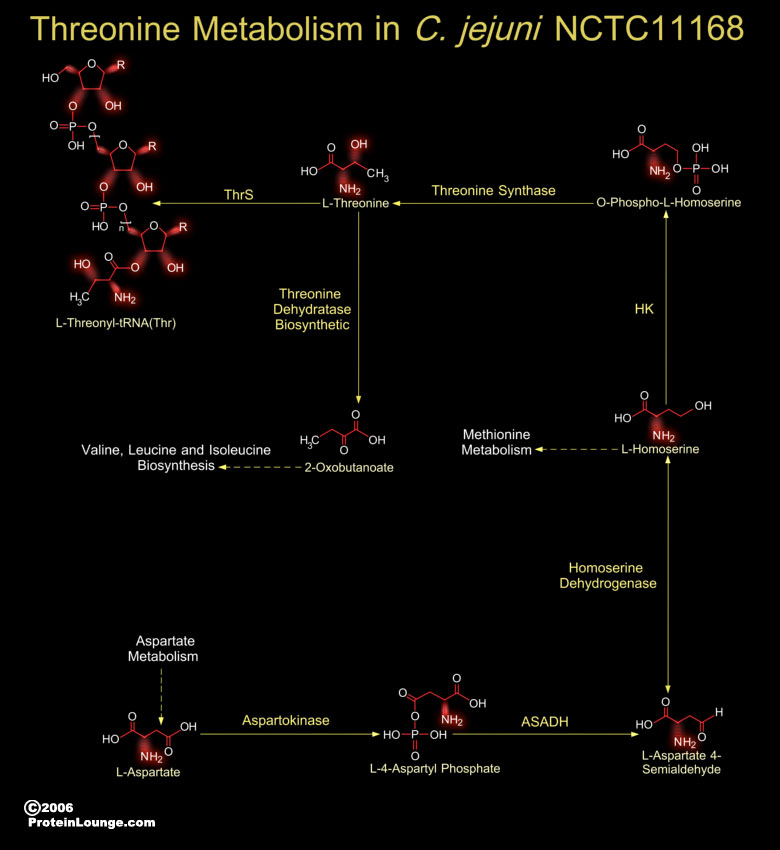
The Gram-negative, slender spiral-shaped, motile, asaccharolytic bacterium C. jejuni (Campylobacter jejuni) is commensal in cattle, swine, and birds. Campylobacteriosis is the illness caused by C. jejuni and is often known as Campylobacter Enteritis or human bacterial Gastroenteritis. Typical symptoms of C. jejuni foodborne illness include severe abdominal pain, diarrhea, fever, nausea, headache, and muscle pain. C. jejuni grows best at the body temperature of a bird, and seems to be well adapted to birds, which carry it without becoming ill. The bacterium is fragile. It cannot tolerate drying and can be killed by oxygen. It grows only if there is less than the atmospheric amounts of oxygen present (microaerophilic). Freezing reduces the number of Campylobacter[..]
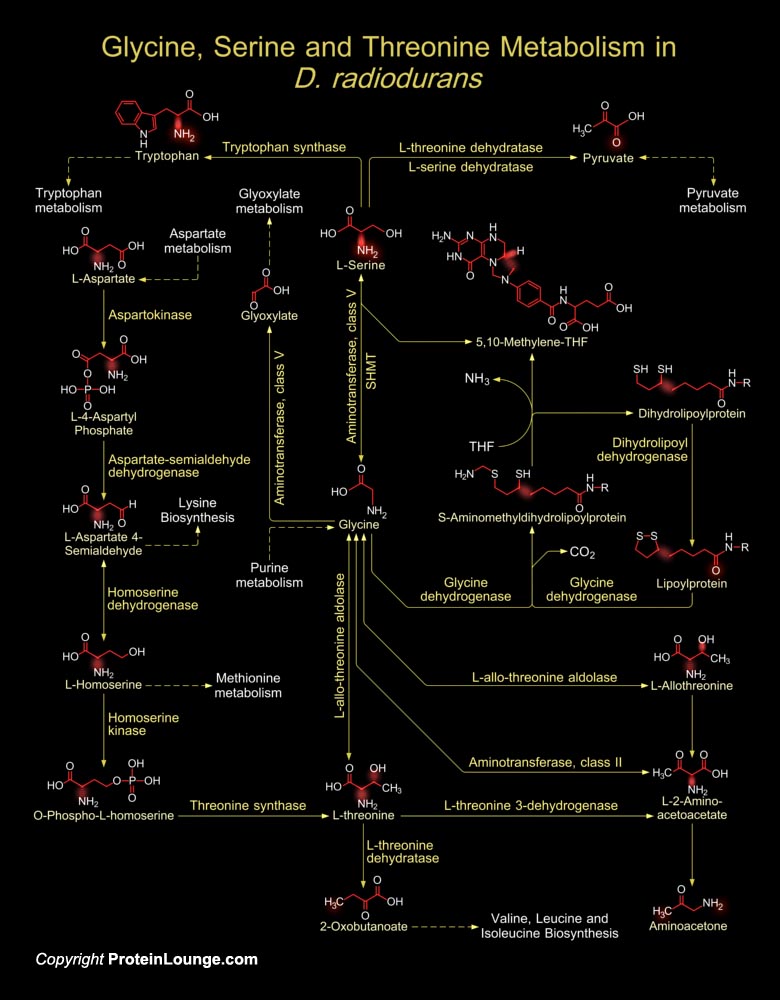
The bacterium D. radiodurans (Deinococcus radiodurans) is a Gram-positive, red-pigmented, non-motile bacterium that shows remarkable resistance to a range of damage caused by ionizing radiation, desiccation, UV radiation, oxidizing agents, and electrophilic mutagens. D. radiodurans is best known for its extreme resistance to ionizing radiation; not only can it grow continuously in the presence of chronic radiation, but also it can survive acute exposures to Gamma radiation without dying or undergoing induced mutation (Ref.1 & 2). These amino acid metabolisms also provide metabolites essential for the formation of complex outer membrane lipids and a thick peptidoglycan layer that serves to protect D. radiodurans from lethal doses of radiation. Glycine is basically[..]

E. coli (Escherichia coli) is Gram-negative with external flagella. The strain E. coli CFT073 are uropathogenic and this group is responsible for Acute Cystitis and Pyelonephritis. E. coli is a remarkably diverse species because some strains living as harmless commensals in animal intestines, whereas other distinct genotypes including the enteropathogenic, enterohemorrhagic, enteroinvasive, enterotoxigenic, and enteroaggregative E. coli causes significant morbidity and mortality as human intestinal pathogens (Ref.1). Extra-intestinal E. coli are another varied group of life-threatening pathogens of this manifestly versatile species. This latter group of pathogens includes distinct clonal groups responsible for neonatal meningitis/sepsis and urinary tract infections.[..]

The bacterium E. coli (Escherichia coli) is one of the best and most thoroughly studied free-living organisms. It is also a remarkably diverse species because some E. coli strains live as harmless commensals in animal intestines, whereas other distinct genotypes including the enteropathogenic, enterohemorrhagic, enteroinvasive, enterotoxigenic, and enteroaggregative E. coli causes significant morbidity and mortality as human intestinal pathogens (Ref.1). Extra-intestinal E. coli are another varied group of life-threatening pathogens of this manifestly versatile species. This latter group of pathogens includes distinct clonal groups responsible for neonatal meningitis/sepsis and urinary tract infections. E. coli is Gram-negative, flagellated and members of the strain E.[..]
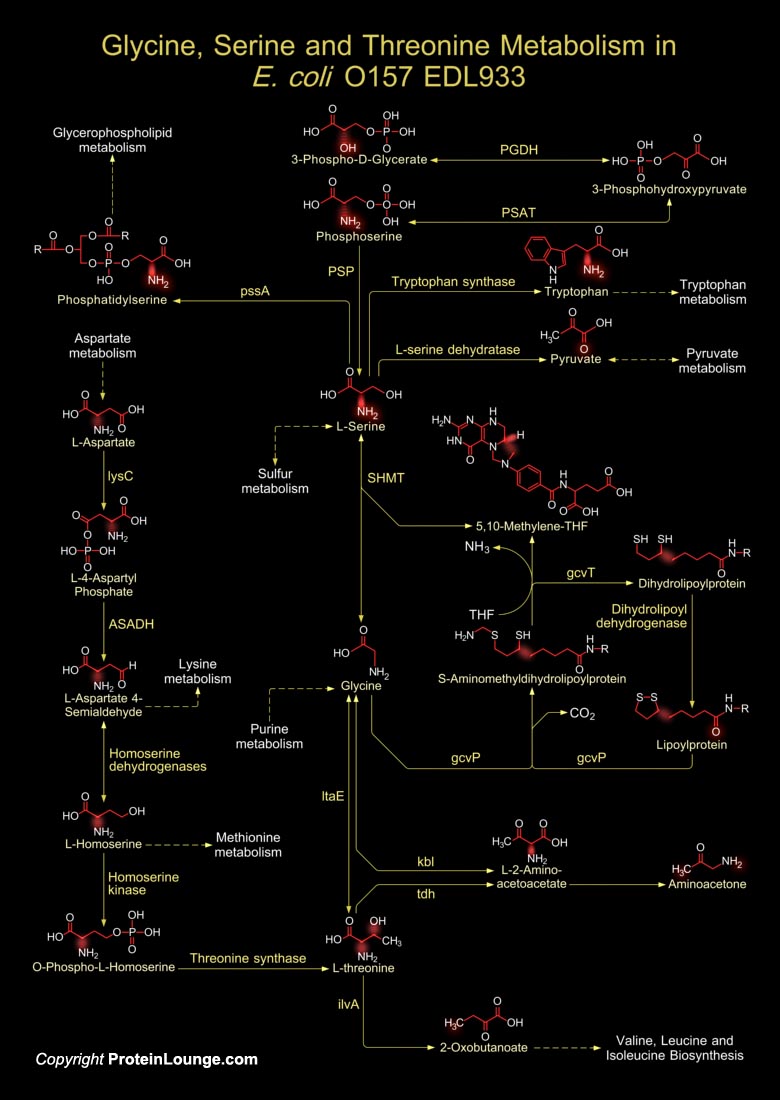
The bacterium E. coli O157 (Escherichia coli O157) is a worldwide threat to public health and are implicated in many outbreaks of Haemorrhagic Colitis, some of which included fatalities caused by Haemolytic Uraemic Syndrome. The severity of disease, the lack of effective treatment and the potential for large-scale outbreaks from contaminated food supplies have propelled intensive research on the pathogenesis and detection of E. coli O157 strains and these include candidate virulence factors, alternative metabolic capacities, several prophages and other new functions-all of which could be targets for surveillance (Ref.1). The enterohemorrhagic E. coli O157 EDL933 is Gram-negative having external flagella. The involvement of D- and L-Amino acid metabolism like L-Serine,[..]

The bacterium E. coli O157 (Escherichia coli O157) is a worldwide threat to public health and are implicated in many outbreaks of Haemorrhagic Colitis, some of which included fatalities caused by Haemolytic Uraemic Syndrome. The severity of disease, the lack of effective treatment and the potential for large-scale outbreaks from contaminated food supplies have propelled intensive research on the pathogenesis and detection of E. coli O157 strains and these include candidate virulence factors, alternative metabolic capacities, several prophages and other new functions-all of which could be targets for surveillance (Ref.1). The enterohemorrhagic E. coli O157 Sakai is Gram-negative, having external flagella and first derived from an outbreak in Sakai city, Japan. It[..]
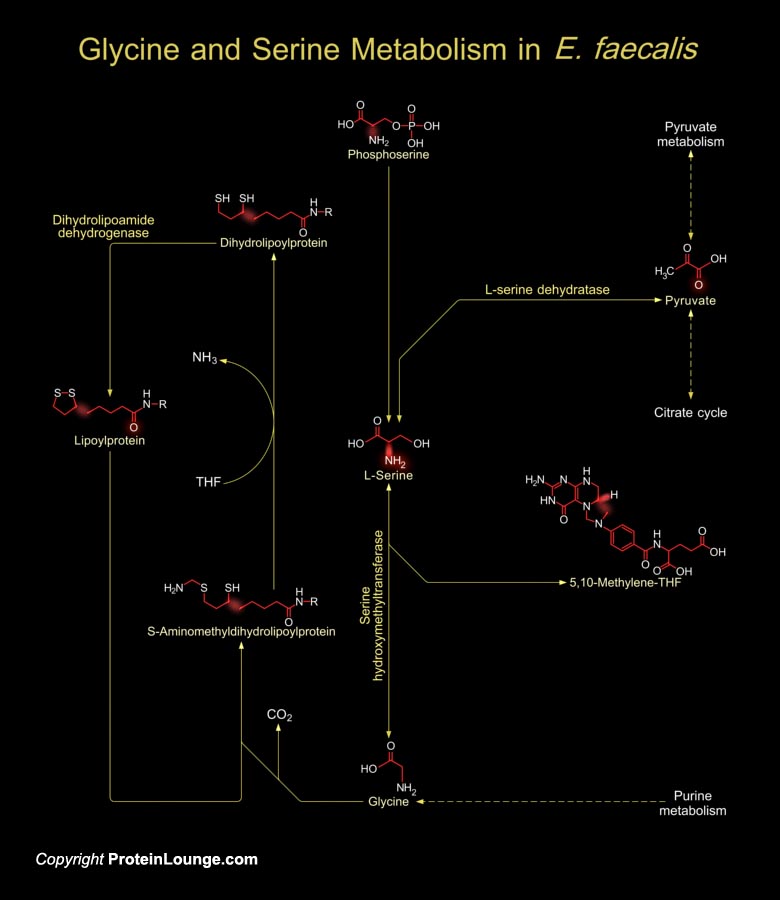
E. faecalis (Enterococcus faecalis), also known as S. faecalis (Streptococcus faecalis), a Gram-positive bacterium, is a natural inhabitant of the mammalian gastrointestinal tract and is found in soil, sewage, water and food, frequently through fecal contamination. It is an opportunistic pathogen that is a major cause of urinary tract infections, Bacteremia, bloodstream infections, wound infections, and infective Endocarditis. It has become a nosocomial pathogen that is refractory to most therapeutic options (Ref.1). The involvement of D- and L-Amino acid metabolism like L-Serine, L-Threonine and Glycine plays a major role in cell sustenance, generation of several essential compounds, intact protein synthesis, and pathogenesis in E. faecalis (Ref.2). In E.[..]

